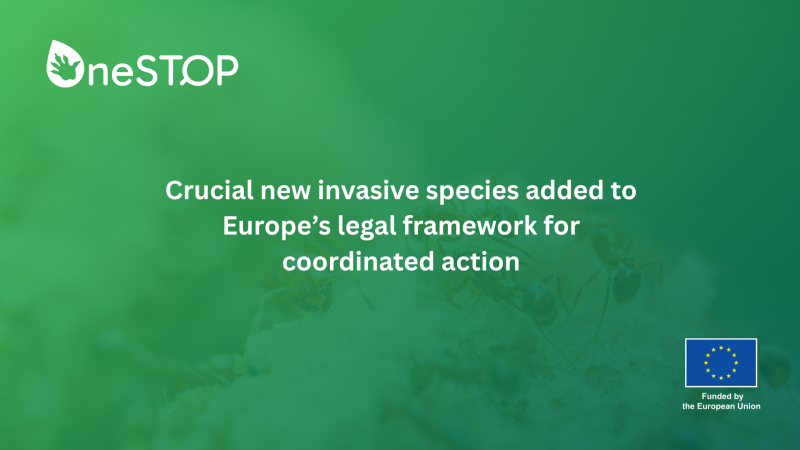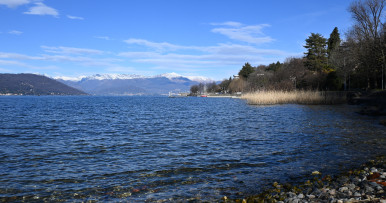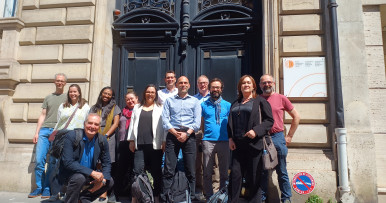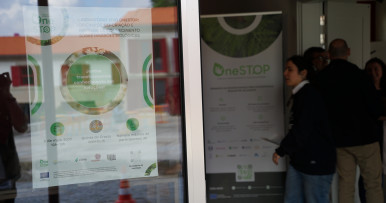Crucial new invasive species added to Europe’s legal framework for coordinated action
Authored by Simon Reynaert from Meise Botanic Garden and Nadya Denkova from Pensoft Publishers.
The cost of invasive alien species (IAS) to the global economy, ranging from damage to crops to depletion of natural resources (e.g., fish populations) and deterioration of human health (e.g., disease transmission), is estimated at about $2.2 trillion USD total between 1960 and today. In a recent study, new estimates indicate increasing annual costs, currently hovering around approximately $35 billion USD per year. The European Commission has estimated that across the EU, these costs are around 12 billion euros per year. While the exact figure depends on the metrics used across studies, some things are clear: these costs are significant, increase every year, and affect every continent, with Europe taking the heaviest hits.
The EU has recognised the threats IAS pose to the Union in Regulation (EU) 1143/2014, where a set of measures for IAS prevention and management have been considered. In that legal document, the Commission decided that IAS which are of Union concern should be given priority. Species of Union concern were considered the species which cause damage so significant in the affected Member States that it justifies the adoption of dedicated measures applicable across the Union, including in the Member States that are not yet affected or are even unlikely to be affected. These species were included in a Union list in 2016, which has been regularly updated based on numerous factors in 2017, 2019 and 2022. In June 2025, the EU Commission announced the latest expansion of the list with 26 new species of Union concern. These latest additions enable synergistic governance and management interventions regarding emerging invasive species and crucially provide a necessary legal baseline for the incorporation of problematic species into national legislation of individual Member States.
Amongst others, the expanded list not only finally provides a necessary legal framework for cross-border management of known pests, such as Japanese knotweed (Reynoutria japonica) and relatives, but also gives special attention to previously underrepresented groups, with a notably large number of new invertebrate additions. Though the latter mostly consist of critters that often go unnoticed (e.g., the Obama Flatworm - Obama nungara), the damage they can cause to infrastructure, healthy soils and marine ecosystems vital for food production and carbon storage cannot be overstated.
OneSTOP directly supports the EU-wide efforts outlined in the Union list of concern by discussing concrete management interventions and raising awareness in the Living Labs, as well as aggregating, analysing and publishing occurrence data on these novel invasive species in more accessible formats.
In the upcoming weeks, we will share more about the latest additions to the list and their individual impacts on our social media channels (LinkedIn, Bluesky):
-
Acacia mearnsii (Black Wattle)
-
Acridotheres cristatellus (Crested Myna)
-
Asterias amurensis (North Pacific Sea Star)
-
Bipalium kewense (Shovel-headed Garden Worm)
-
Brachyponera chinensis (Asian Needle Ant)
-
Broussonetia papyrifera (Paper Mulberry)
-
Castor canadensis (American Beaver)
-
Cervus nippon (Sika Deer)
-
Cherax destructor (Common Yabby)
-
Cipangopaludina chinensis (Chinese Mystery Snail)
-
Crassula helmsii (New Zealand Pygmyweed)
-
Delairea odorata (Cape-ivy)
-
Faxonius immunis (Calico Crayfish)
-
Marisa cornuarietis (Giant Ramshorn Snail)
-
Misgurnus anguillicaudatus (Oriental Weatherfish)
-
Misgurnus bipartitus (Northern Weatherfish)
-
Mulinia lateralis (Dwarf Surfclam)
-
Nanozostera japonica (Japanese Eelgrass)
-
Neogale vison (American Mink)
-
Obama nungara (Obama Flatworm)
-
Platydemus manokwari (New Guinea Flatworm)
-
Pycnonotus jocosus (Red-whiskered Bulbul)
-
Reynoutria japonica (Japanese Knotweed)
-
Reynoutria sachalinensis (Giant Knotweed)
-
Reynoutria × bohemica (Bohemian Knotweed)
-
Vespa mandarinia (Asian Giant Hornet)



